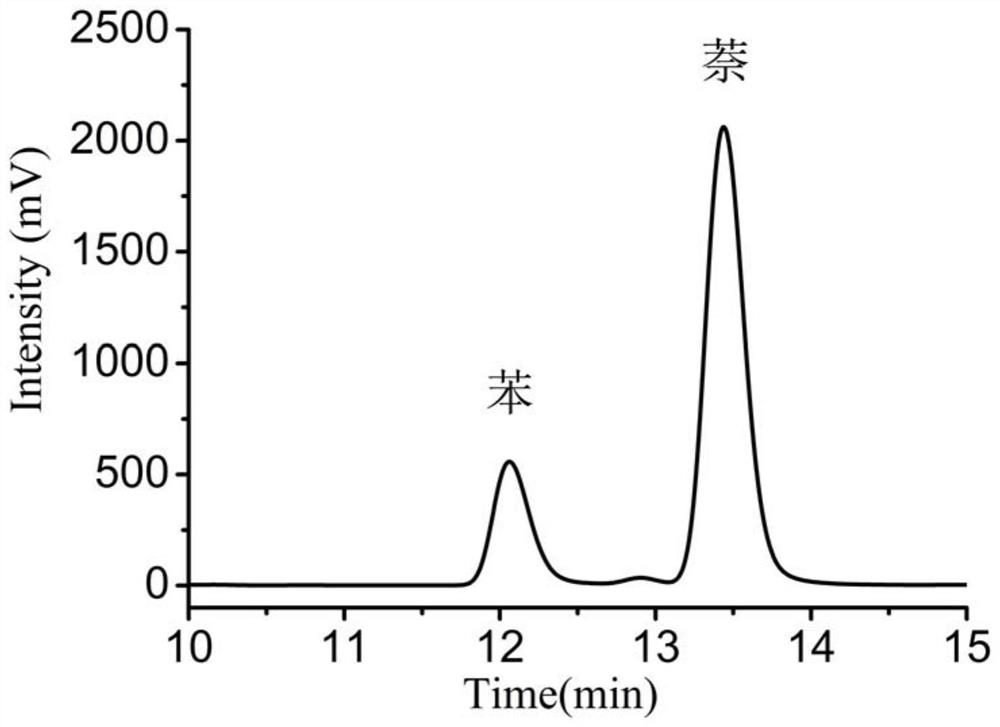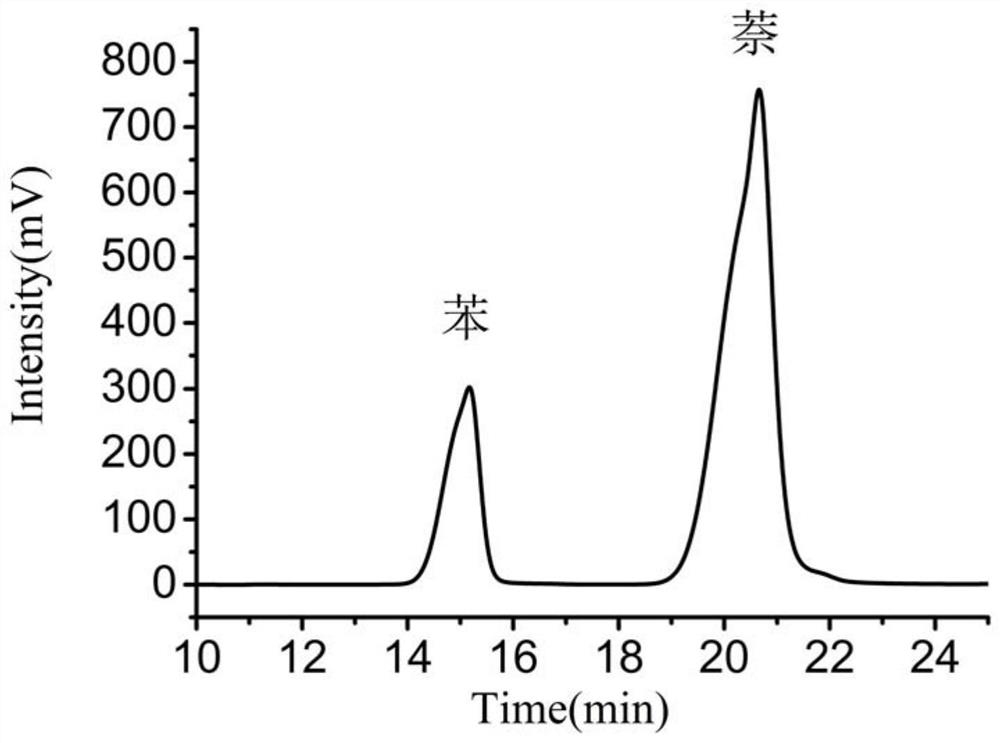A method for separating polycyclic aromatic hydrocarbons using a weakly polar rosin-based polymer chromatographic column
A technology based on polycyclic aromatic hydrocarbons and rosin, applied in the field of high-performance liquid chromatography, can solve the problems of high price, cumbersome steps, and environmental pollution, and achieve the effect of small expansion and good stability
- Summary
- Abstract
- Description
- Claims
- Application Information
AI Technical Summary
Problems solved by technology
Method used
Image
Examples
Embodiment 1
[0049] The prepared weakly polar rosin-based polymer chromatographic column was connected to a high-performance liquid chromatograph, washed with methanol until the baseline was balanced, and then the sample was injected.
[0050] A method for separating polycyclic aromatic hydrocarbons using a weakly polar rosin-based polymer chromatographic column, carried out according to the following steps:
[0051] (1) Preparation of sample solution: take an appropriate amount of benzene and naphthalene, dissolve in methanol, prepare a mixed solution containing 0.05 mol of benzene and 0.005 mol of naphthalene per 1 L, and inject the sample;
[0052] (2) Setting parameters: connect the weakly polar rosin-based polymer chromatographic column to the liquid chromatograph, set the flow rate of the mobile phase of the liquid chromatograph to 0.3mL / min, the detection wavelength to 254nm, and the column oven to be 30°C;
[0053] (3) Separation: Start the injection valve to allow methanol to brin...
Embodiment 2
[0056] The prepared weakly polar rosin-based polymer chromatographic column was connected to a high-performance liquid chromatograph, washed with methanol until the baseline was balanced, and then the sample was injected.
[0057] A method for separating polycyclic aromatic hydrocarbons using a weakly polar rosin-based polymer chromatographic column, carried out according to the following steps:
[0058] (1) Preparation of sample solution: take an appropriate amount of benzene and naphthalene, dissolve in methanol, prepare a mixed solution containing 0.05 mol of benzene and 0.005 mol of naphthalene per 1 L, and inject the sample;
[0059] (2) Setting parameters: connect the weakly polar rosin-based polymer chromatographic column to the liquid chromatograph, set the flow rate of the mobile phase of the liquid chromatograph to 0.3mL / min, the detection wavelength to 254nm, and the column oven to be 30°C;
[0060] (3) Separation: Start the injection valve to allow methanol to brin...
Embodiment 3
[0063] The prepared weakly polar rosin-based polymer chromatographic column was connected to a high-performance liquid chromatograph, washed with methanol until the baseline was balanced, and then the sample was injected.
[0064] A method for separating polycyclic aromatic hydrocarbons using a weakly polar rosin-based polymer chromatographic column, carried out according to the following steps:
[0065] (1) Preparation of sample solution: take an appropriate amount of benzene and naphthalene, dissolve in methanol, prepare a mixed solution containing 0.05 mol of benzene and 0.005 mol of naphthalene per 1 L, and inject the sample;
[0066] (2) Setting parameters: connect the weakly polar rosin-based polymer chromatographic column to the liquid chromatograph, set the flow rate of the mobile phase of the liquid chromatograph to 0.3mL / min, the detection wavelength to 254nm, and the column oven to be 30°C;
[0067] (3) Separation: Start the injection valve to allow methanol to brin...
PUM
| Property | Measurement | Unit |
|---|---|---|
| pore size | aaaaa | aaaaa |
| pore size | aaaaa | aaaaa |
| specific surface area | aaaaa | aaaaa |
Abstract
Description
Claims
Application Information
 Login to View More
Login to View More - R&D
- Intellectual Property
- Life Sciences
- Materials
- Tech Scout
- Unparalleled Data Quality
- Higher Quality Content
- 60% Fewer Hallucinations
Browse by: Latest US Patents, China's latest patents, Technical Efficacy Thesaurus, Application Domain, Technology Topic, Popular Technical Reports.
© 2025 PatSnap. All rights reserved.Legal|Privacy policy|Modern Slavery Act Transparency Statement|Sitemap|About US| Contact US: help@patsnap.com



